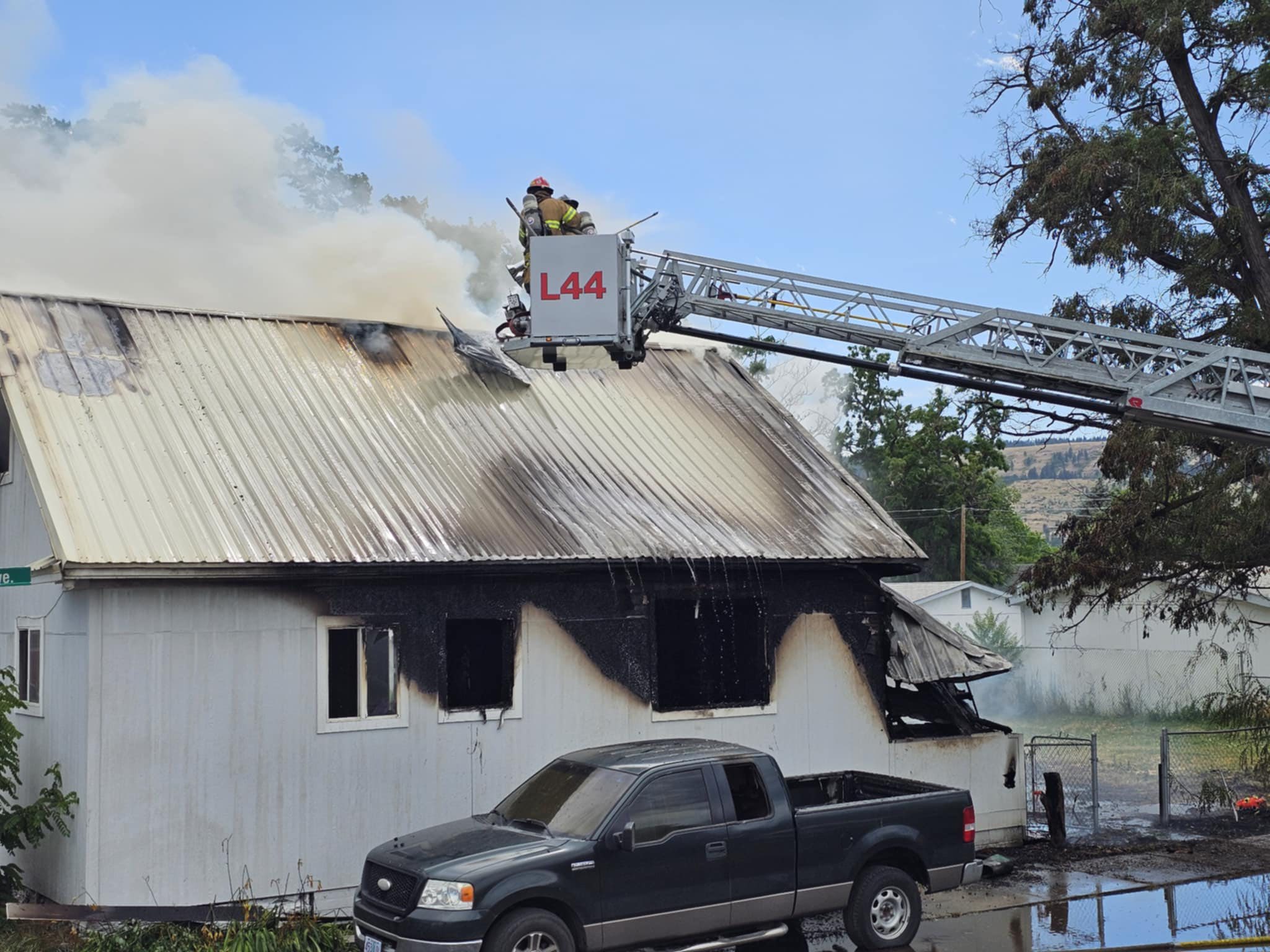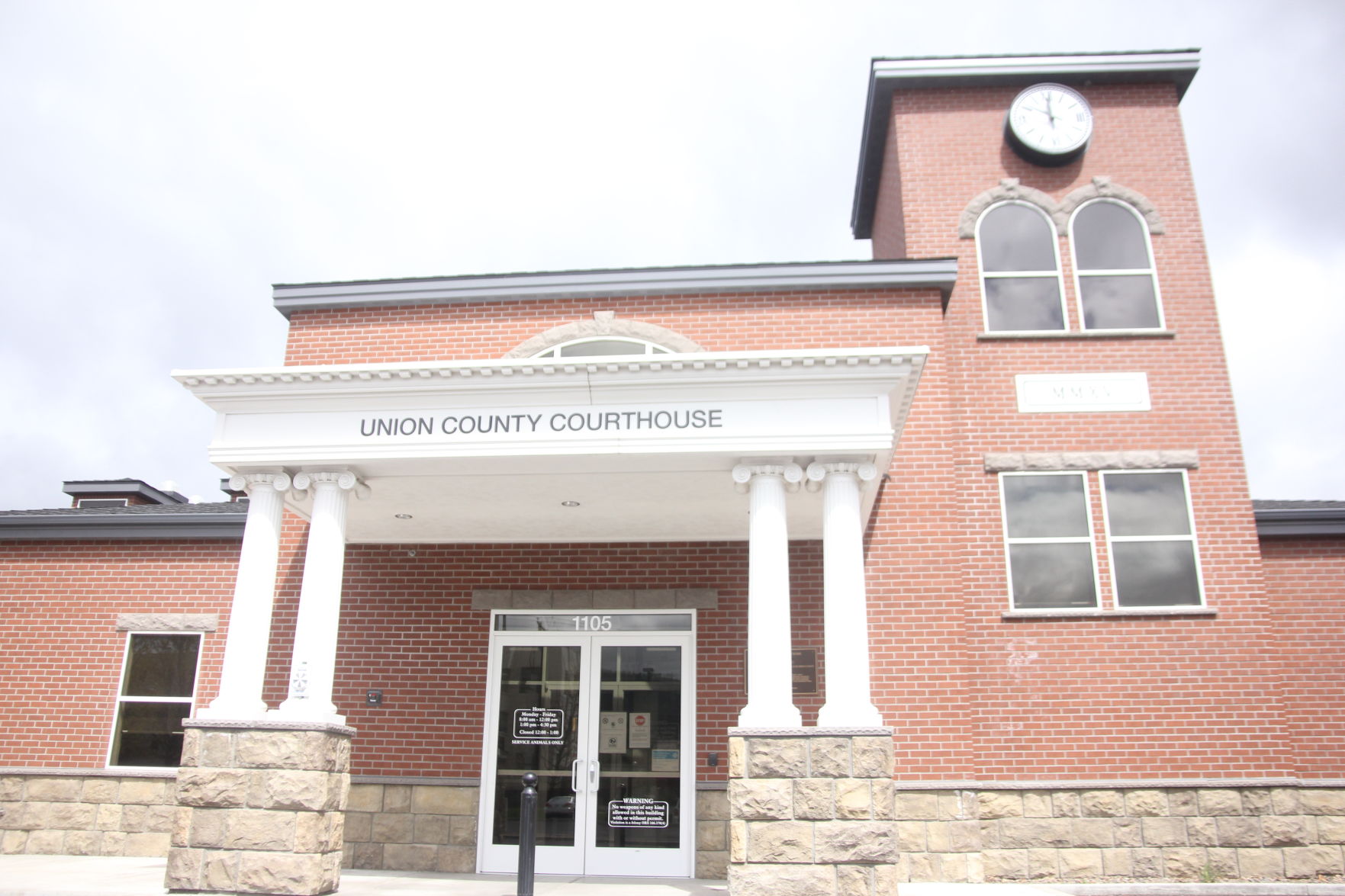Local rancher designated president of Oregon Cattlemen’s Association
Published 10:16 pm Wednesday, February 1, 2012

- ON the vp ranch: Sheryl, Riley and Curtis Martin all help run the VP Ranch outside of North Powder. KATY NESBITT / The Observer
Complying with legislation, concerns about government overreach among issuesconfronting new presidentCurtis Martin of N. Powder
Tucked between the Wallowa and Elkhorn mountains are 650 acres of prime land known as the VP Ranch run by the Martin family; sixth and seventh generation Oregonians. Curtis Martin, the family’s patriarch, is a well-known figure across Oregon as both a rancher and an activist. In December he was appointed president of the Oregon Cattlemen’s Association.
At 4 a.m. on a Saturday in late January, Sheryl and Curtis Martin were helping a heifer calve. The Martin’s cows aren’t scheduled to calve until the first of February, but a bull got in with the herd last spring a little early, one of the anomalies of an agricultural- based business.
By 9 a.m. Sheryl was showered, dressed and off for breakfast with her parents who live in a new house on the ranch. Their new house is a few yards from the one where Sheryl, and her father before her, were raised. On the rolling hills behind the old and new houses are windmills churning power and controversy in the Powder Valley.
The Martins’ son Riley lives in another house on the ranch and is in business with his parents and another brother. While his mom visits his grandparents, Riley shops on line for a new ranch pickup. By 10:30 the two of them are feeding cows heavy with calves on a relatively mild winter morning. By noon, Sheryl must be in North Powder for a Cattlewomen’s meeting. They are planning a banquet and she is an integral part of the organization as well as the community.
Like many of the farm and ranch families of Eastern Oregon, the Martins are a two-career couple. When Sheryl isn’t working the ranch she teaches middle school science.
Each generation that operates the same ground as the one before it experiences similar challenges – mild or harsh winters, droughts, floods, and sickness in the herd. In turn, each generation faces changes that affect ranching such as the Endangered Species
Act, windmills, and legislation aimed at protecting clean water.
Sheryl says she emphasizes the recyclable quality of water with her students.
“That same drop of water that is falling on you fell on the dinosaurs,” she says to her class.
Twelve years ago, she said, she and Curtis got involved in the Powder Brownlee Agriculture Water Quality Plan with their local soil and water conservation district, but the concerns over water quality started during Gov. John Kitzhaber’s first term in the 1990s, Curtis said, with Senate Bill 1010.
The bill is unique to Oregon and gives the Department of Agriculture authority to regulate agriculture water quality. Senate Bill 1010 was passed by the 1993 legislature, fine-tuned in 1995 and affects each of the state’s 39 basins.
Martin said the bill was part of the fall-out from the federal Clean Water Act of 1973 that gives the Environmental Protection Agency authority to regulate water quality including non-point source pollution.
“Non-point sources are hard to prove,” Martin said, and agriculture falls in this category.
Under the 1010 bill, local advisory committees were created that take into account landscape, geology, and agricultural practices to alleviate pollution. Martin said assessing water quality and “Best Management Practices” need to have a scientific approach. Yet this has been a challenge.
“The monitoring aspect promoted in the legislation has not had sufficient funding to get solid data,” Martin said.
Collecting water quality data has never been uniform enough and compiled into a general understanding, said Curtis
“Each basin is going to be different,” Curtis said, “and stream morphology is so complicated.”
Every rancher has a basic understanding that water quality affects his bottom line. Healthy water sources support healthy cows and crops, but Curtis has become well- versed in the issues that impact his industry.
“The complexity of each stream is far beyond our understanding; each segment of each stream is ever-changing. We are making advancements and we can help it, but we’ll never completely understand it,” said Curtis.
And this is where politics meets industry. In rough terms, the Department of Environmental Quality focuses on urban, residential and “point-source” pollutants like factories and water treatment facilities while the Department of Agriculture oversees farming and “non-point sources” of pollution. Curtis said he believes that point-source and non-point source industries should come together.
“It is critically important that the Oregon Cattlemen’s Association help with the Memorandum of Agreement between the Department of Agriculture and the Department of Environmental Quality,” said Curtis. “Water is so key to our existence. If we can’t manage water, we’re not going to be here. That’s why Sheryl and I decided to get involved.”
Curtis said he believes the agriculture community is doing what Oregonians want, yet are often criticized. He said in the last 20 years ranching has come a long way to improve its practices and support the landscape. However, seven generations of ranching on the same ground may be proof that their business is sustainable.
“We are folks who are reality-based and live in the real world, not in some utopia that can never be achieved. We are problem solvers,” said Curtis. “No other business has done so much to improve the resources. My sons are working the same soil with the same water that we have for seven generations. If that doesn’t say anything about sustainabilityandhellip;”
In addition to complying with legislation, the Cattlemen are concerned about government over-reach, Curtis said. They want the legislators to understand and listen to their concerns about their day-to-day existence.
“We want to make sure whatever is controlling what we do is logical and legitimate and we want to make sure we have input how it is applied,” said Curtis.
In all, Curtis said he is optimistic about the ranching industry. Cattle prices are excellent and the world demand for food exceeds the supply. He said every $1 spent in agriculture turns over seven times to support other businesses.
“I am privileged to represent the finest people in the world. I am enthused and grateful to be part of the ranching community.”









